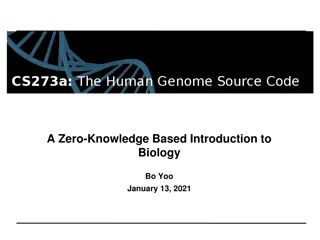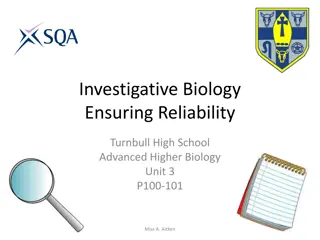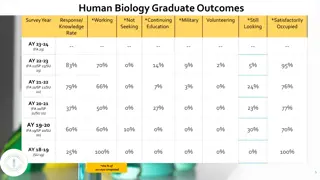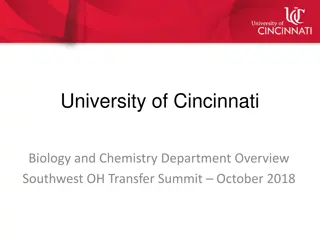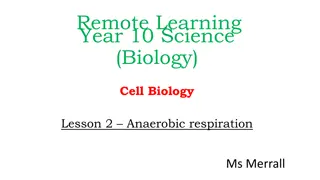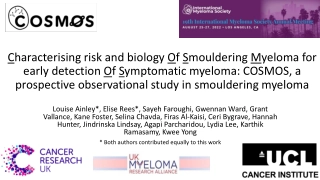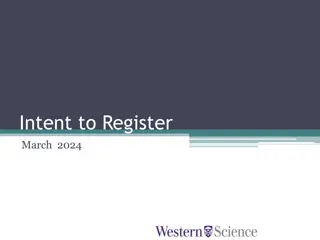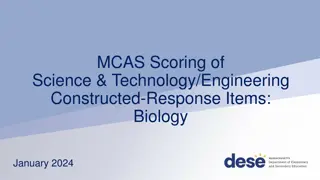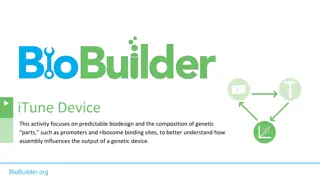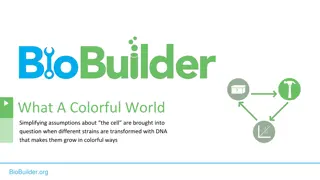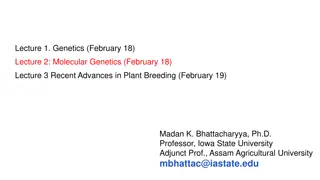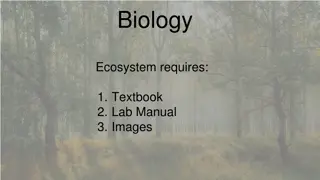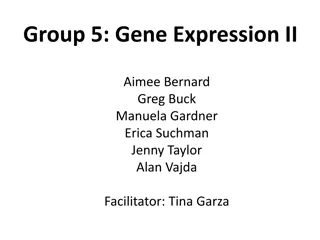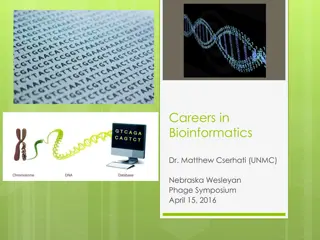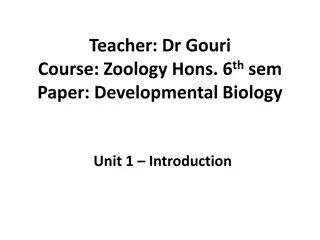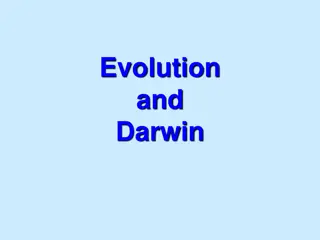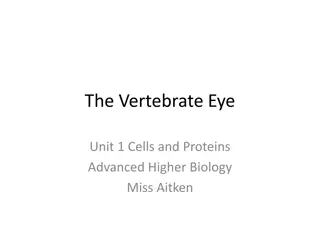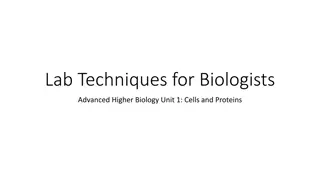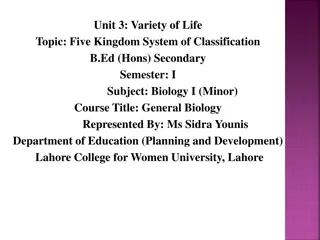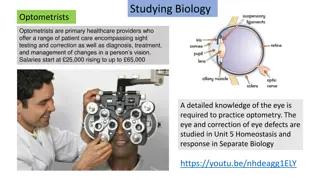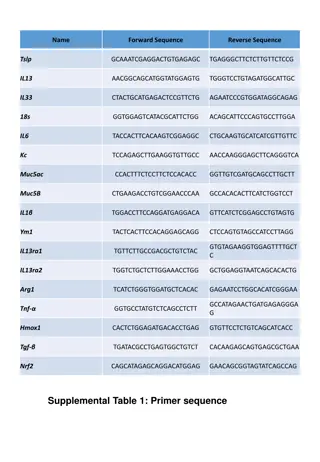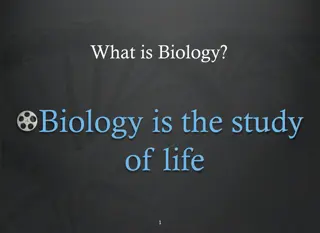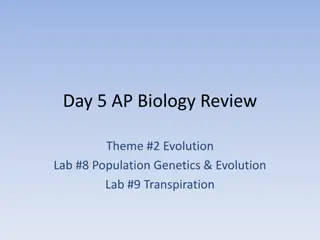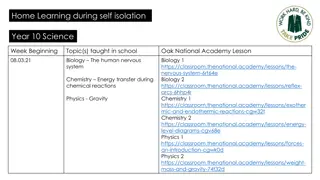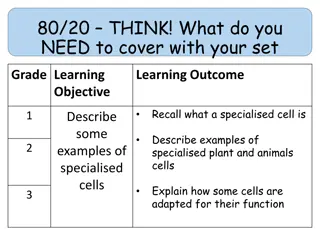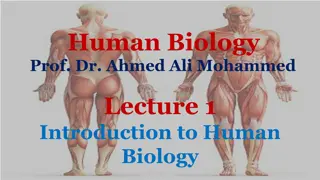AP Biology FRQ Practice
Bacterial growth over time and the effects of hypertension on blood vessels are analyzed in this FRQ practice. Factors influencing the growth curve, bacterial advantages in molecular research, and limitations in studying eukaryotic gene expression are explored. Additionally, the interaction of ouabain on the Na+, K+-ATPase transporter in blood vessels leading to hypertension is discussed.
Download Presentation

Please find below an Image/Link to download the presentation.
The content on the website is provided AS IS for your information and personal use only. It may not be sold, licensed, or shared on other websites without obtaining consent from the author. Download presentation by click this link. If you encounter any issues during the download, it is possible that the publisher has removed the file from their server.
E N D
Presentation Transcript
AP Biology FRQ Practice WEEK 1: 4/6 4/10: from 500 AP Biology Questions 2ndEdition WEEK 2: 4/13 4/17: from Cracking the AP Biology Exam 2020 Edition WEEK 3: 4/20 4/24: from 2016 AP Bio released questions WEEK 4: 4/27 5/1: from 2012 AP Bio released questions WEEK 5: 5/4 5/8: (extra on-line practice) WEEK 6: 5/11 5/15: (extra on-line practice) WEEK 7: Review/Wrap-up AP Exam
Week 1 Practice Problem #1 Refer to the following graph of bacterial growth over time. Bacteria were grown in media in a laboratory. They were maintained at 37 C for 18 hours. 1. Explain the factors that determine the shape of the growth curve. 2. Estimate and compare the growth rate between: a. 6 and 8 hours b. 8 and 10 hours c. 10 and 12 hours 3. Bacteria are an important model organism in molecular biology research. State two reasons bacteria are useful in the study of eukaryotic cellular processes. 4. Explain two major limitations of the use of bacteria in studying eukaryotic gene expression.
Scoring 10 points available 1. Growth depends on both biotic and abiotic factors, such as availability of nutrients, build up of wastes, size of container etc... (1 pt.) 2. 6-8 hrs. 40,000 80,000; 8-10 hrs. 80,000 220,000; 10-12 hrs. 220,000 250,000. Between 6 10 hrs. the population doubles, at 10 hrs. the population stabilizes and reaches carrying capacity (5pts.). 3. They grow quickly and can be easily manipulated or transformed (2 pts.). 4. They are single-celled so there is no development or differentiation and eukaryotic cells genetic material (DNA) would undergo regulation post transcription resulting in complex gene expression, bacteria gene expression is simple on or off. (2pts.)
Week 1 Practice Problem #2 In people with hypertension (high blood pressure) there is an accumulation of sodium and calcium in the cells that line the blood vessels that results in the narrowing of the vessel. The accumulation of intracellular sodium ion concentrations is directly caused by an inhibition of the Na+, K+ -ATPase transporter in the cells that line the blood vessel. The chemical responsible for the inhibition of the Na+, K+ -ATPase transporter is present at very low concentrations in the plasma of people with hypertension. It is close or identical to ouabain one of the 3 cardiac glycosides (ouabain, strophanthidin & digitoxigenin). These molecules all bind to the Na+, K+ -ATPase transporter.
1. Identify the part of the ouabain molecule that is most likely the part that reacts to or interacts with the Na+, K+ -ATPase. 2. Briefly state your reasoning.
Scoring 3 points available 1. All 3 molecules have the same basic structure, the 4-ringed steroid base and that is the most likely part of the molecule that binds to the Na+, K+ -ATPase. (2 pts.) 2. They are all in the same class of molecules so it is likely that they all react to or interact the same way to the Na+, K+ -ATPase. (1 pt.)
Week #2 Question #1 4 points Part A: Describe the role of carbon. (1pt.) Carbon is used to build (or as a base or backbone) all 4 macromolecules (or you could list them). Part B: Explain what occurs when the membranes fuse. (1pt.) Polar will interact/form bonds with polar and non-polar with non-polar. Part C: Make a claim about the immediate effect. (1pt.) Cell will die OR cell cannot make DNA/RNA/amino acids/proteins/nucleotides. (Any of these would be considered correct.) Part D: Provide reasoning with evidence to support your claim. (1pt.) All proteins contain nitrogen (DNA/RNA/nucleotides/proteins).
Week 2 Question #2 5 points Part A: Identify the process. (1pt.) Condensation or dehydration synthesis reaction joins 2 amino acids. You have to name the process for the point, not just describe it. Part B: Explain why Receptor X changed shape. (1pt.) Two that were charged/ionic/hydrophilic were changed to uncharged/nonpolar/hydrophobic. Needs a specific change for the point. Part C: Place an X on each level that is affected. (2pts.) 1stand 3rdshould each have an X . (see next slide for explanation) Part D: Explain how the substitution affects the function. (1pt.) Function is determined by structure, so altering the shape may change the binding site/the response of Receptor X .
4 levels of protein structure
Week 2 Question #3 An enzyme was discovered in reptile feces called gertimtonase, that was believed to aid in digestion and water retention. Researchers wanted to know how the enzyme s activity level changed with varying temperature. Fecal samples were taken from Russian Tortoises that were living in varying environmental temperatures. The data is summarized in a graph.
Russian tortoise gertimtonase reaction rate with varying temperature 45 40 35 30 Reaction rate (mmol/s) 25 20 15 10 5 0 30 32 34 36 38 40 42 -5 Temperature in C
A. Describe how you can determine that tortoises raised at 34C had the highest variability in enzyme reaction rates. B. Reptiles in the study needed to have a gertimtonase reaction rate exceeding 10mmol/s for an observed improvement in water retention. Describe the range of temperatures that Russian tortoises could be raised in to achieve this benefit. C. Desert tortoises live in environments where the ground temperature can exceed 60 C. Using the data in the graph, predict and justify how the graph would look for desert tortoise gertimtonase. D. Explain at a molecular level how the temperature change might affect gertimtonase.
Scoring question #3 7 points available A. Data shows that 34 C has the highest reaction rate. (1pt.) B. Ideal temperature would be between 30 C and 37 C to get the water retention effect. (1pt.) C. The graph s peak would shift to the higher temperatures. Desert tortoises would have enzymes that would be optimized for a higher temperature, so the peak should be expected at 60 C and drop significantly at both lower and higher temperatures. (3pts.) D. Raising the temperature above 37 C would likely denature the enzyme and this would lower the reaction rate. (2pts.)
Week 3 Question #1 (7 points) A. How does substance L cross the plasma membrane? i. Active transport ii. Cells maintain an intracellular concentration of 120 mM this is always higher than outside of the cell. (2 pts.) B. Graph must have (1 pt. each) : correct axis labels, units and plotted line. C. (1/2 maximal entry rate) Answer range is 31 34 mM. (1 pt.) D. Substance L cannot enter if it is attached to a large protein or there is not specific membrane receptor for a large protein. (1 pt.)
Week 3 Question #2 (4 points) A. Membrane separates the cell from the external environment OR it is selectively permeable to regulate what enters and exits the cell. (1pt.) B. The membrane channel protein is selectively permeable for one type of ion because the ions cannot pass between the phospholipids of the membrane. (Only small lipid soluble molecules can.) (1pt.) C. The inside of the phospholipid bilayer is hydrophobic so small hydrophobic molecules can diffuse across the membrane. (1pt.) D. Energy is not required for passive transport (diffusion) because the molecules are moving from an area of high concentration to an area of low concentration. (1 pt.)
Week 3 Question #3 The eukaryotic protozoan parasite P. falciparum is the causative agent of malaria. P. falciparum cells contain an organelle called an apicoplast (see Figure 1). Apicoplasts synthesize precursors of biomolecules that are required for growth and reproduction of the parasite. This is the simple apicoplast structure.
Figure 1 DNA Golgi Apicoplast Nucleus Mitochondria Figure 1: Simplified diagram of cellular structures of Plasmodium falciparum
A. Based on Figure 1, describe TWO pieces of evidence a researcher could use to support the claim that apicoplasts evolved from free-living, prokaryotic organisms. B. Doxycycline is a drug used to treat malaria and some bacterial infections. Doxycycline binds to the prokaryotic 30S ribosomal subunit and inhibits its function. Explain how doxycycline can be an effective treatment for a P. falciparum infection in humans.
Scoring question #3 (4 points) A.The apicoplast has both a double membrane (1pt.) and contains its own DNA (1pt.) B. Apicoplasts have 30S/prokaryotic ribosomes. (1pt.) The proteins would not be synthesized when doxycycline is present. (1pt.)
Week 4 Question #1 (7 points) A. Oxygen is the terminal electron acceptor at the end of the ETC. (1pt.) Remember oxygen is electronegative - it pulls the positive protons! B. Graph must have (1 pt. each) : correct axis labels, units and plotted line. C. The concentration of glucose has little to no effect on the ATP concentration in the cells. (1pt.) D. i. ATP production will decrease or stop (1pt.) ii. Adding the compound would likely result in more protons being bound to it and likely in the intermembrane space, where the amount of protons is greatest. This would likely eliminate the proton gradient that drives the production of ATP. If the protons do not flow thru the membrane, ATP synthase will not work and no ATP will be produced. (1pt.)
This is the most highly concentrated area of H+/protons. They collect in the space, waiting to move into the matrix and driving the enzyme ATP synthase which will produce ATP. The proton gradient is critical to the process. If there is something else present in the intermembrane space and BINDS to the protons, they will not move and ATP will not be produced.
Week 4 Question #2 (3 points) A. A change in the pH, either too high or too low, will likely denature the enzyme enolase (changing its shape)and it will become less efficient or stop working. (1pt.) B. Negative control: Measure the reaction rate at different substrate concentrations without the enzyme present. (you d remove the enzyme the positive control) (1pt.) C. The (protein) structure of enolase is more stable at 55 C because it is likely found in an organism that has an adaptation allowing it to grow at this higher temperature. (1pt.)
A negative control is part of a well- designed scientific experiment. The negative control group is a group in which no response is expected. It is the opposite of the positive control, in which a known response is expected. What is negative control?
Week 4 Question #3 (2 points) Fossils of a microscopic organism are found in rocks determined to be over 3.5 billion years old. Identify TWO types of evidence that would help answer the question of whether the organism was photosynthetic. I added the photo not part of the original question.
Answer: Any 2 of the following: A. Possible evidence that is was a photosynthetic organism: 1. Chloroplasts are present 2. High levels of oxygen gas in the surrounding rock aerobic environment 3. Evidence of photosynthetic pigments (chlorophyll) in the cell 4. Chemical analysis showing evidence of the photosynthetic process B. Possible evidence that is was NOT photosynthetic: 1. Lack of any chloroplast or photosynthetic membrane 2. Surrounding rock suggests an anerobic environment
Week 5 Question #1 (7 points) a. The first interaction would be the hormone (ligand/chemical messenger) binds to a receptor protein in the target cell. (1 pt.) b. i. ANY of the 3: level of phosphorylated signaling protein OR phosphorylated STAT 5 OR phosphorylated protein kinase B (1pt.) ii. Negative control no hormone OR denatured hormone OR the zero time point when the hormone is added (1 pt.) iii. The researchers wanted to see how long the response to the hormone lasted OR the hormone might not start working immediately. (1pt.) c. i. The addition of insulin caused a high level of phosphorylated protein kinase B (approx. 80% of maximum) to the end (240 minutes). (1 pt.) ii. Rate of decrease: 3.25% per minute. Equation: 100% - 35% = 65%, 65%/20 (divided by) = 3.25% per minute (range 3% - 3.5% would be correct) (1pt.) d. The data given shows that different signaling proteins are phosphorylated by 2 different hormones, supporting the 2 different signaling pathways. (1 pt.)
Week 5 Question #2 ( 4 points) A. Group 3 p16 is blocked. (1pt.) B. Answer must have group 7 OR groups 4, 5, 6 and 7 (1pt.) C. When CDK inhibitors were blocked, fibroblasts divided. So, if different CDK inhibitors in the neurons were blocked, this could potentially make them re-enter the cell cycle. (1pt.) D. When those CDK inhibitors are absent, cyclins and CDKs might result in continuous cell cycling and cell division. Cancer is uncontrolled cell growth. (1pt.)
Week 5 Part 2 Unit 5 FRQ Question #1 (9 pts.) A. A lizard with the ZW genotype has 1 copy of the gene, ZZ has 2 copies, meaning one of the Z s is possibly dominant. (1pt.) B. i. Correct x & y axis labels, correct units and scale, line/bar plotted correctly (3pts.) ii. Difference in females at 24 C, 32 C and 36 C? There is no overlap b/t 24 C and 32 C showing a significant difference at these temperatures, the data is identical for the 2 crosses at 36 C, so there is no significant difference at this temperature. (1pt.)
C. i. For both crosses, temperature determines that most embryos will be female when incubated at 35 C. (1pt.) ii. For ZZm x ZWf approx. 50% will be female if incubated at 24 C. For ZZm x ZZf, temp. determines sex so none will be female at this low temperature. (1pt.) D. i. The W chromosome will likely disappear from populations in warmer climates. (1pt.) ii. Embryos can develop as females without the W chromosome, to be males, there needs to be 2 Z s and only at certain temperatures. Two Z chromosomes are required at a lower temp. for males, 1 Z is insufficient. (1pt.)
Week 5 Part 2 Question #2 (4 points) A. Homologous chromosome pairs randomly segregate (separate) during Meiosis I. (1pt.) B. Crossing over during prophase I between the chromatids. (1pt.) C. Uneven chromosome #s are from non-disjunction of a pair of homologous chromosomes during meiosis I. They fail to separate. (1pt.) D. Spermatozoa do not contain mitochondria, only the female ovum does, so all mitochondria in an organism come from the ovum. (1pt.)
Week 6 FRQ Unit 6 Question #1 (10 pts.) A. i. Luciferase is produced by ribosomes in the cytoplasm or in the cytosol of the lymphocytes. (1pt.) ii. Order is determined by the nucleotide sequence of the mRNA/amino acid sequence. (1pt.) B. i. Independent variable particular plasmid or the CD3 gamma regulatory sequence (1pt.) ii. The parent plasmid is the negative control plasmid or the one without any inserted regulatory sequences. (1pt.) iii. Positive control is the plasmid with the non CD3 gamma active promoter and is used to measure promoter activity (1pt.)
1. This is the region with the desired gene being inserted. 3. The T lymphocyte will copy the new plasmid with the gene in it. 2. The gene is inserted into the plasmid.
C. i. pCD3-15 this plasmid gives the greatest luciferase activity. (1pt.) ii. The different sequences cloned into the plasmids contain different combinations of positive and negative regulatory sequences. (1pt.) iii. The percent increase is approx. 100% - the pCD3-59 bar ends at the 2 and the pCD3 -149 bar ends at the 4 on the Relative Luciferase Activity axis. (1pt.) D. i. If plasmid pCD3 789 is introduced into nonlymphoid cells there will be little to no luciferase activity. (1pt.) ii. Nonlymphoid cells will not contain the transcription factors that bind to the CD3 gene regulatory sequences. (1pt.)
Week 6 Unit 6 Question #2 (4pts.) A. Chromosomes in prokaryotes are usually circular and in eukaryotes they are linear. (1pt.) B. Topoisomerase works in front of the replication fork by releasing/relieving the supercoil so that the DNA can unwind and replicate (1pt.) C. (see next slide) (1pt.) D. DNA synthesis only occurs in the 3 to 5 direction, synthesis of a DNA strand in the replication bubble (region II) is continuous at one replication fork and discontinuous at the other replication fork. (1pt.)
Discontinuous DNA synthesis along the template strand 1 3 2 1 Continuous DNA synthesis along the template strand









